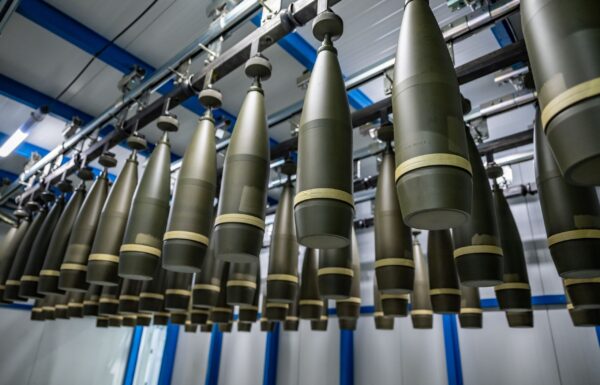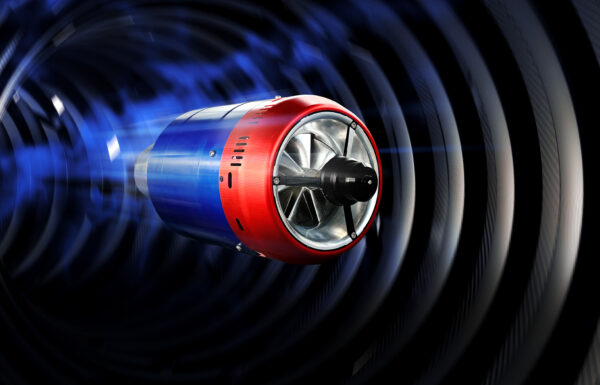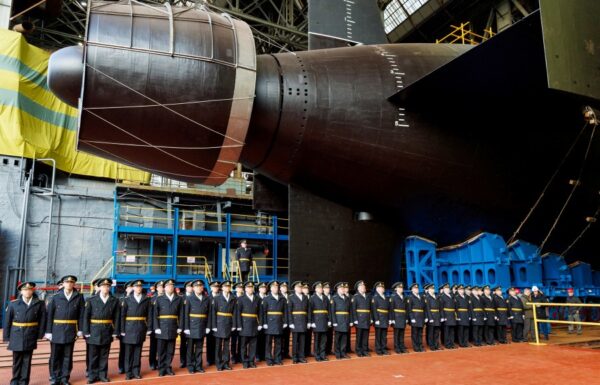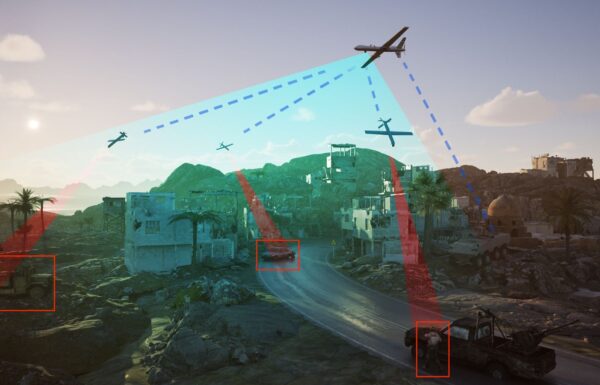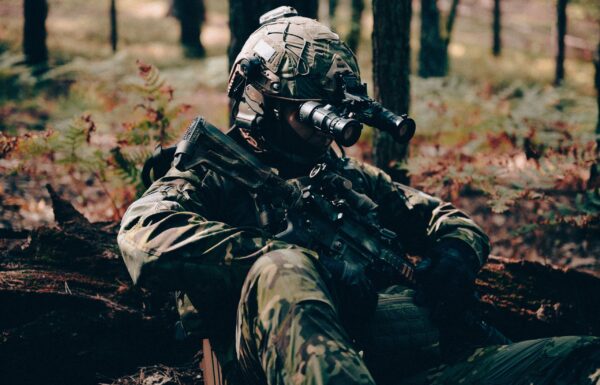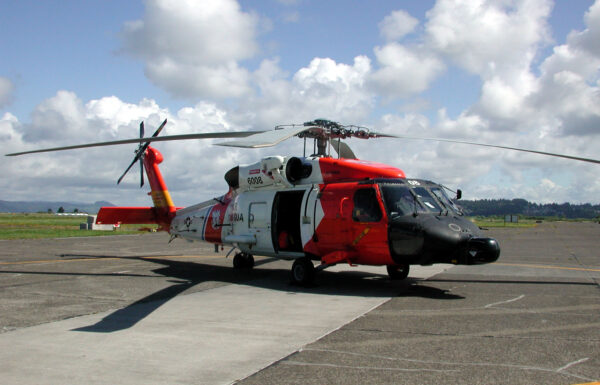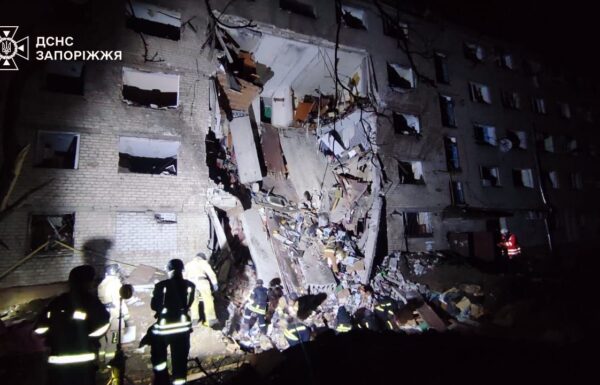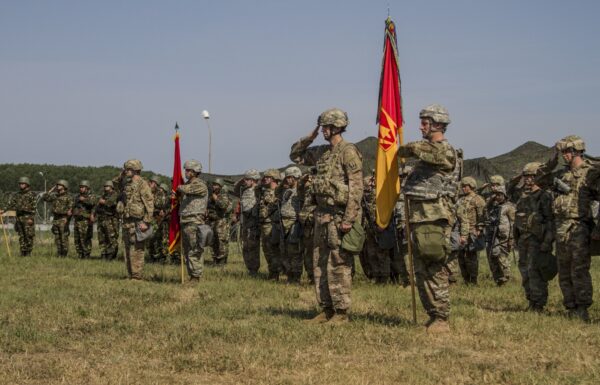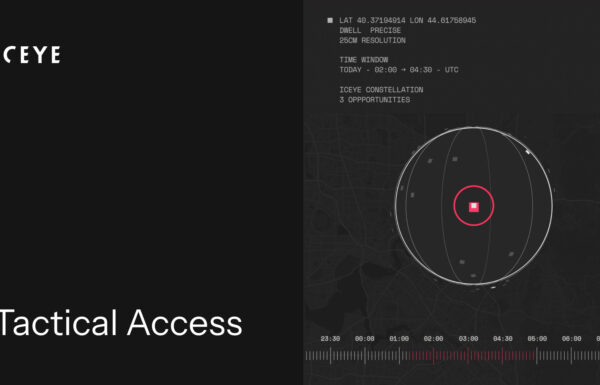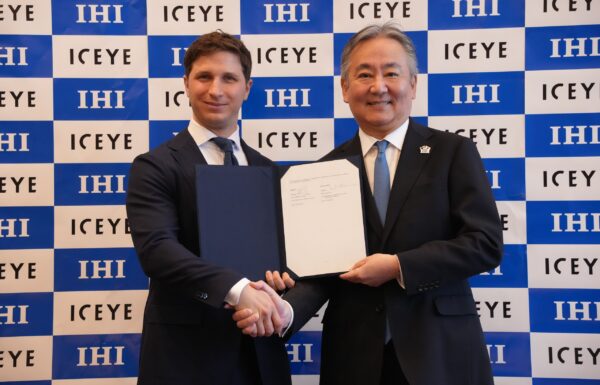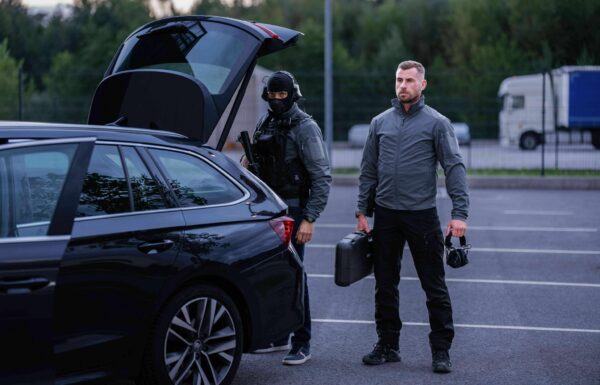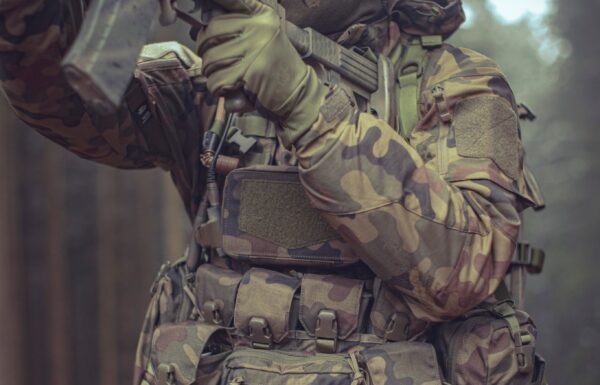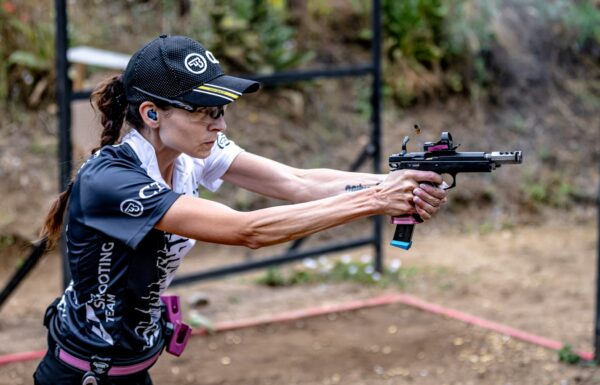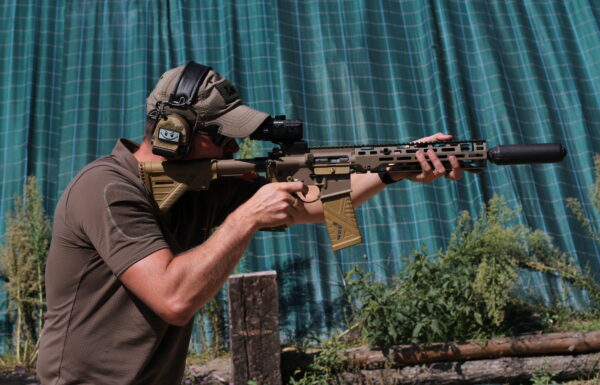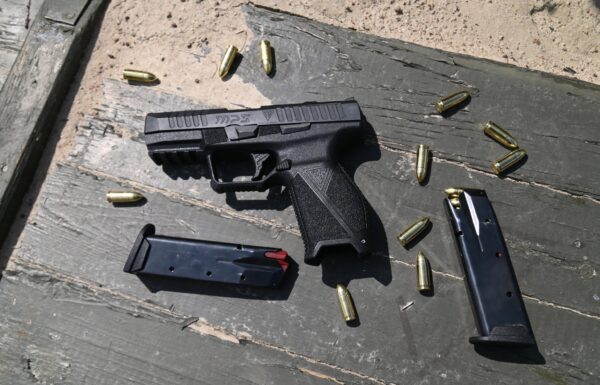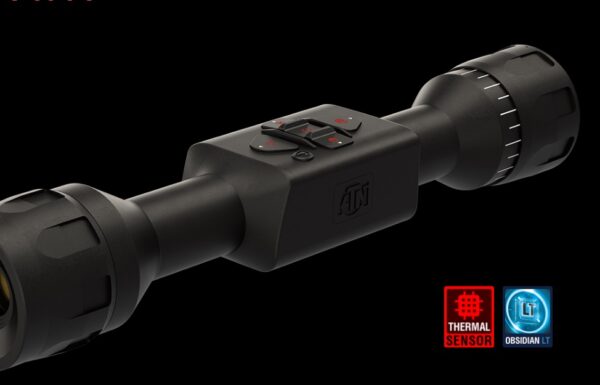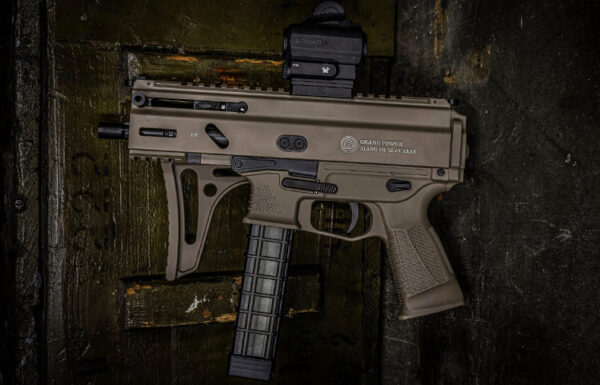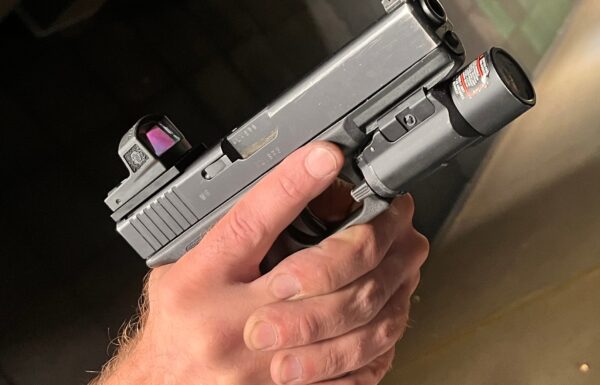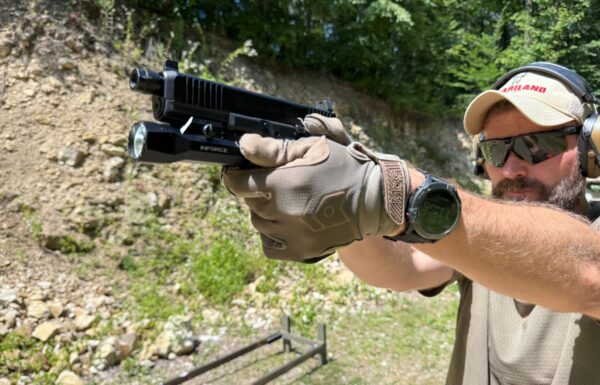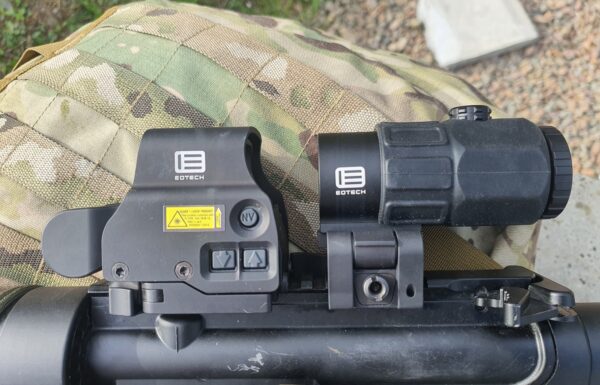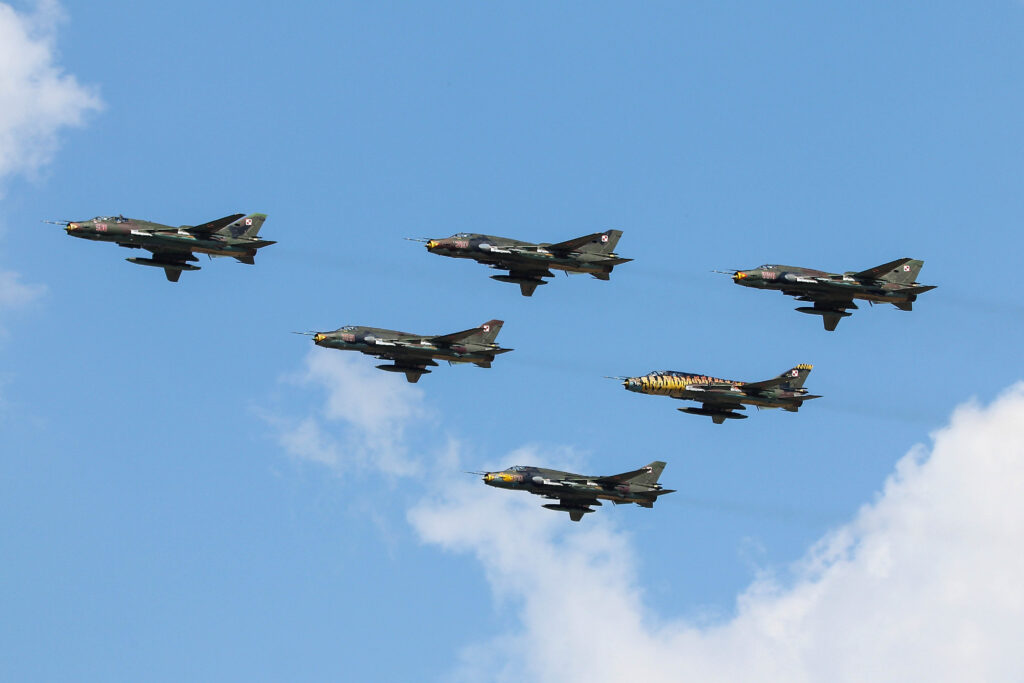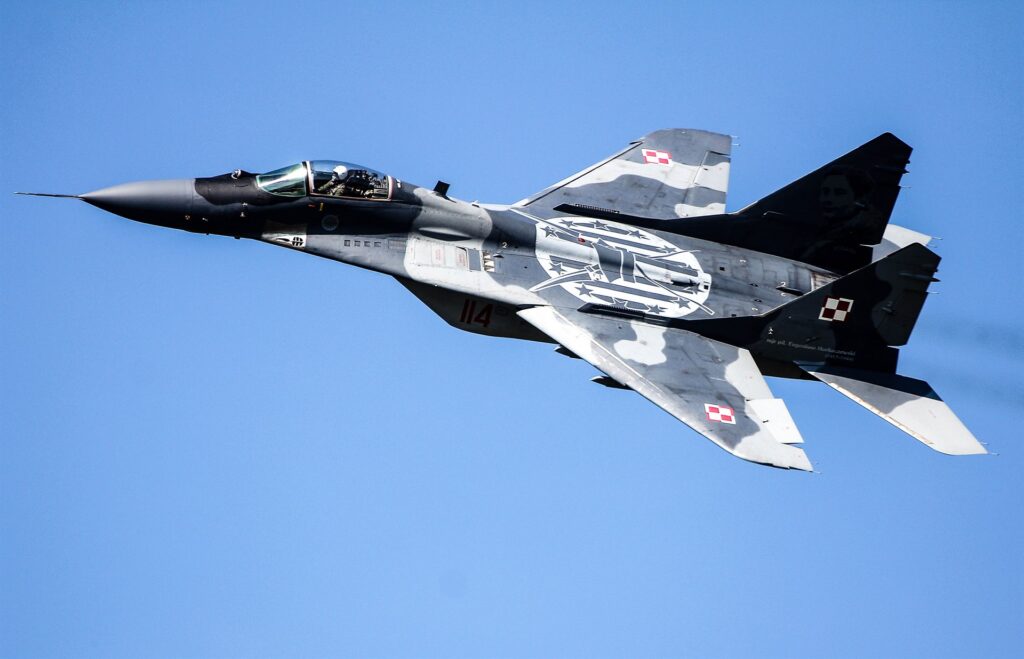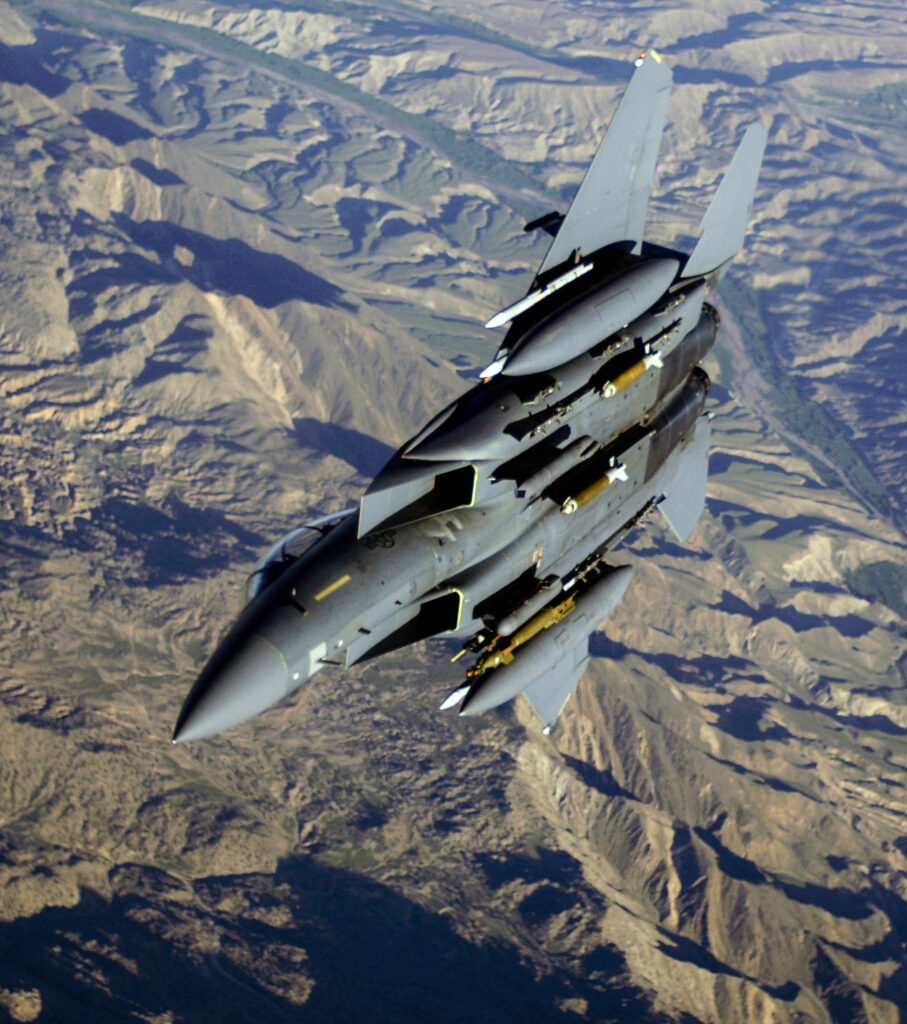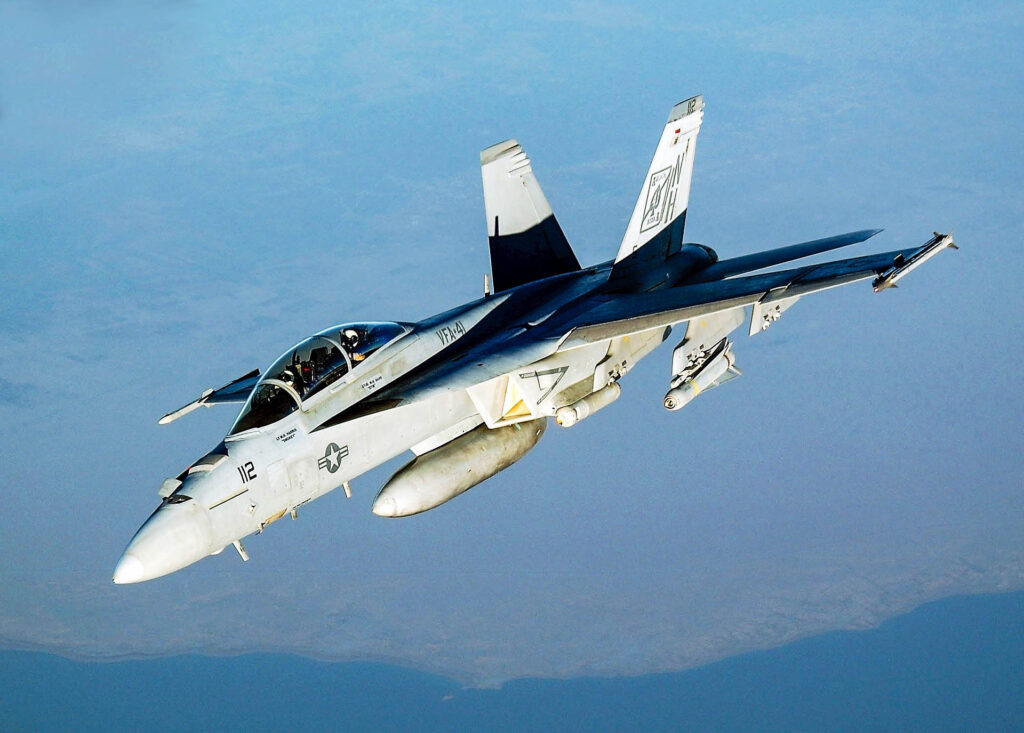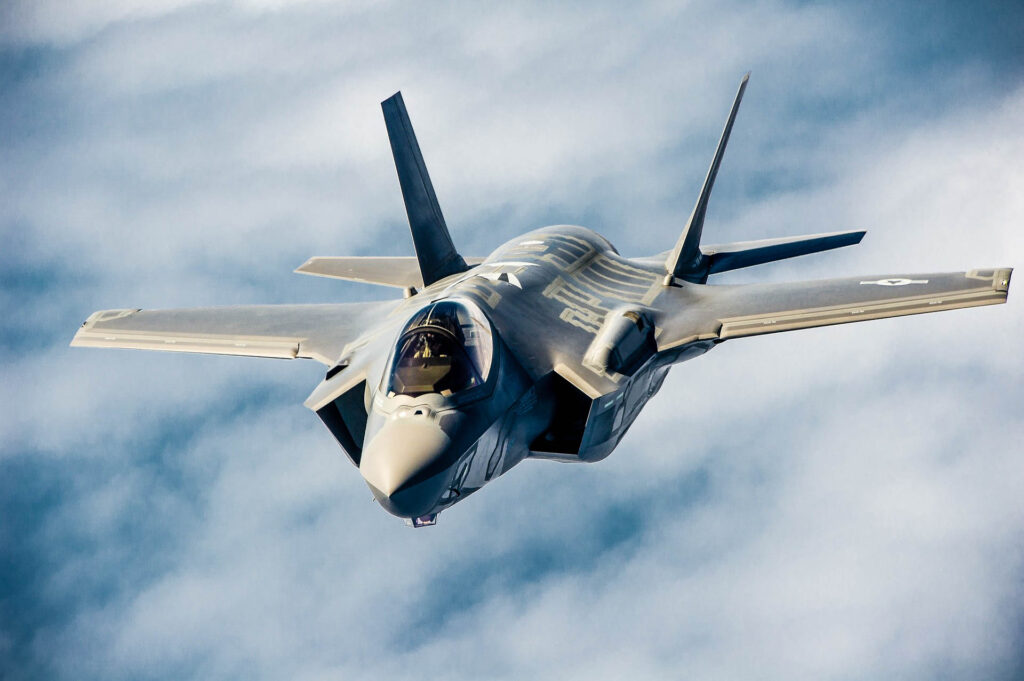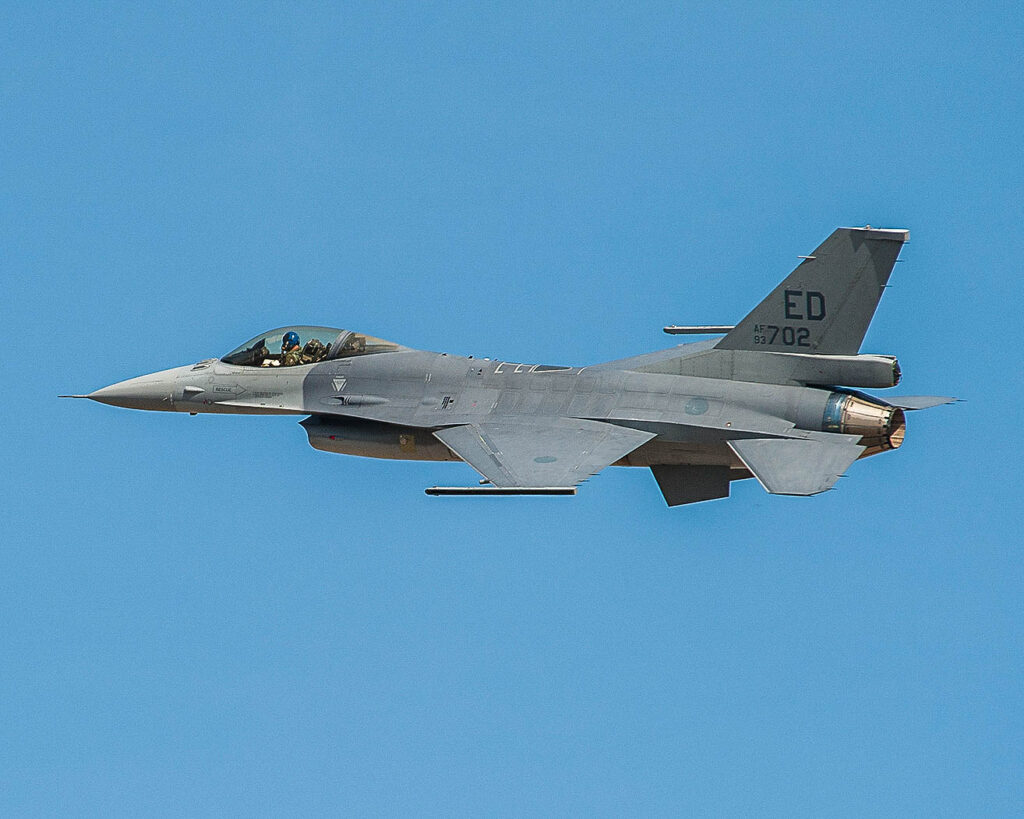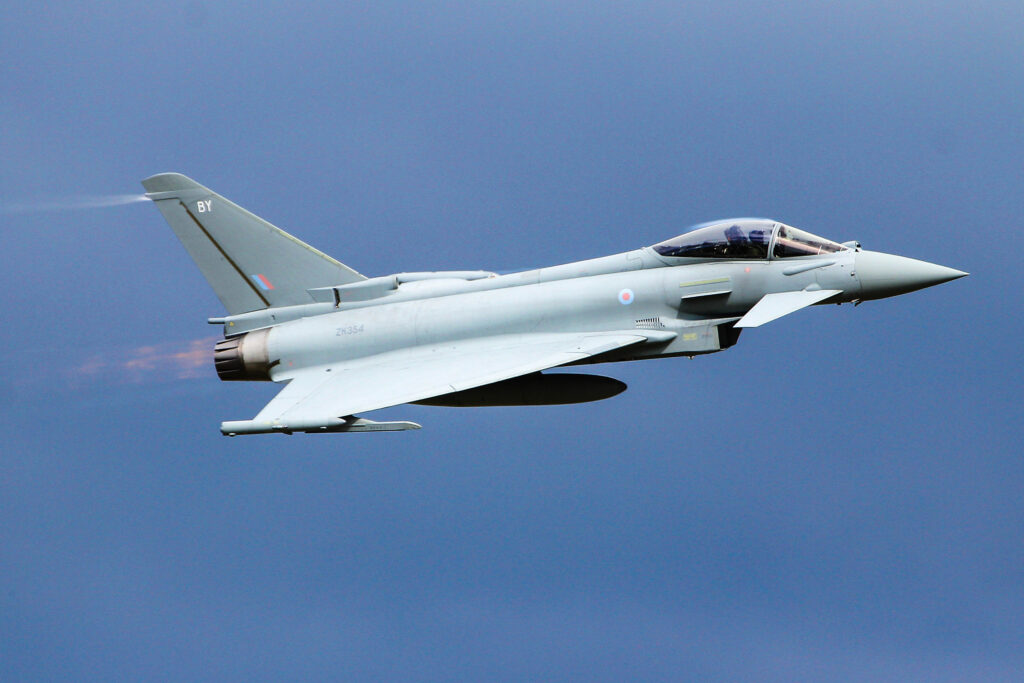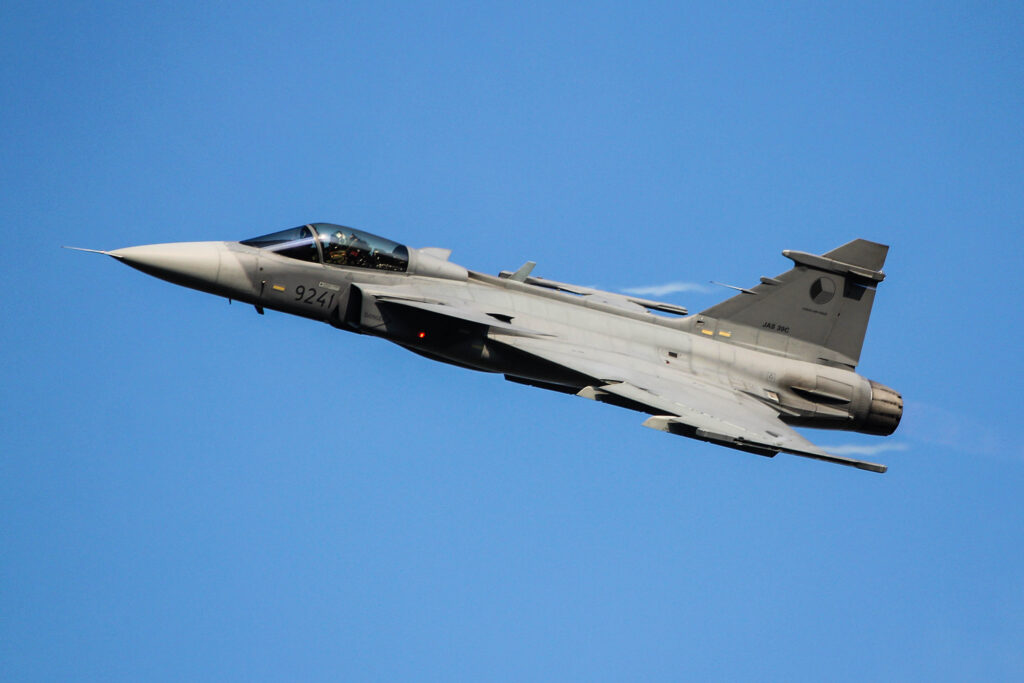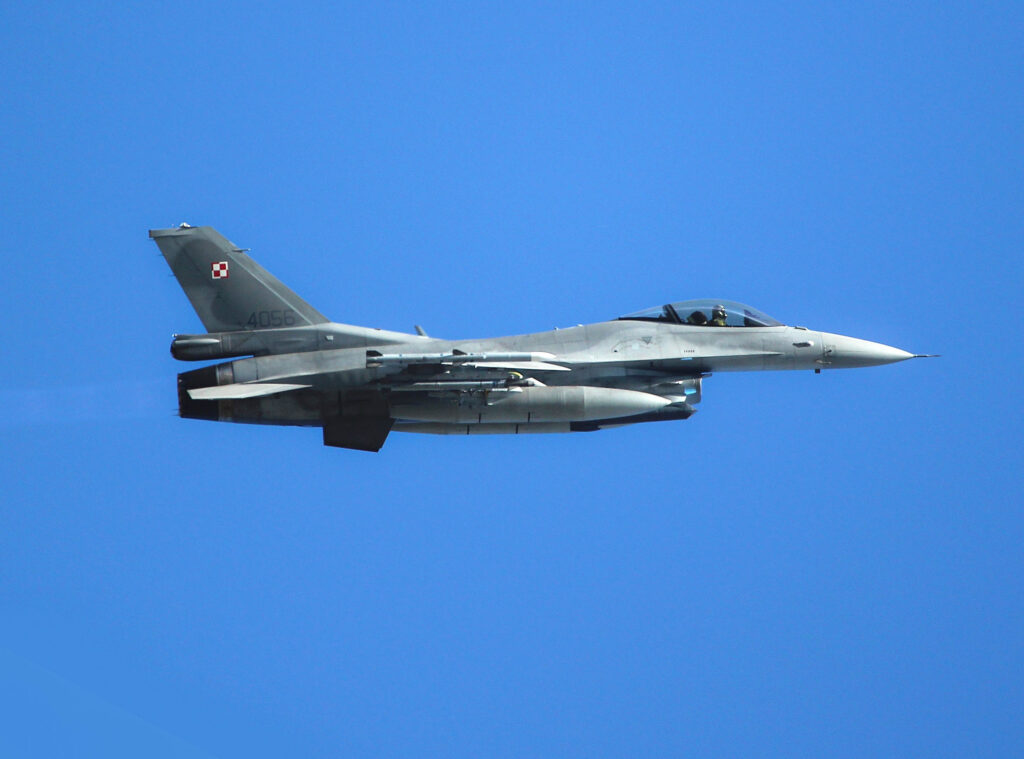Ministry of Defence published a short statement that Mariusz Blaszczak, Minister of Defence, ordered the Chief of the General Staff to speed up the procurement program for the procurement of a new generation fighter plane. The aircraft should introduce new quality of air operations and ground support operations. The aircraft should operate in a network-based and anti-access environment and should be compatible with the allied air forces components.
Su-22 service life is heading towards the end. Combat potential of these aircraft is significantly reduced on the modern battlefield
Harpy incoming
Multirole combat aircraft (MRCA) should be capable of breaching the enemy`s air defense and operating in a condition of strong opposition. It should also be able to act in direct cooperation with allied forces within the new generation joint command and information environment.
Ministry`s statement did not contain an exact programme name but it refers to the Harpia (Harpy) programme. It was announced in spring 2017, before the two accidents of Polish MiG-29 aircraft from 18th of December 2017 and 6h of July 2018. Previously, in March 2018, the Ministry decided to forgo the plans to purchase 96 of used F-16A/B Fighting Falcon aircraft.
By the end of May 2017, Tomasz Szatkowski, Vice-minister of Defence and chief of Strategic Defence Overview informed, that the procurement programme for the 5th generation of multirole combat aircraft envisions acquiring of at least 2 squadrons. To replace the MiG-29 and Su-22 on 1:1 basis, 48 aircraft should be procured. According to some sources, the Polish Air Force is interested in a purchase of as many as 64 MRCAs for the Harpy programme.
Harpy – a species of a large bird of prey, native for the forests of the Central and South America. In Greek mythology, harpy was a daemon or spirit associated with children and soul kidnapings and strong winds.
Market examination
The conceptual analysis phase of the Harpy programme started on 23rd of November 2017, when the Armament Inspectorate of the Ministry of Defence published information about market analysis aimed at procurementat procurement of multirole combat aircraft for the Polish Air Force and the equipment to conduct aerial jamming of radio electronic equipment. The information also stated that the requirements for the new equipment include widening of the possibilities of offensive and defensive combat against enemy`s air assets and of the tasks conducted as a ground, naval, and special element support.
The proceedings concerned 2 separate tasks. The offers were to be submitted either for a separate task or jointly. The deadline was set for 18th of December 2017. The published information did not contain a direct reference to Harpy designation but the email address for the submittals was set with an iu.harpia@… name.
Polish MiG-29`s will run out of technical service life in 10 years and will have to be retired
MRCA and Electonic Attack Pod
The conceptual analysis phase was conducted in 2 separate directions. First for the procurement of modern, multirole combat aircraft, and the second for the advanced Electronic Attack Pod (EAP) or a similar system integrated within the aircraft (like the Boeing F/A-18G Growler used by the USA and Australia). The EAPs should obviously be compatible with the planes acquired for the Harpy programme./
Potential candidates for the MRCA were the American F-15E Strike Eagle, F/A-18 Super Hornet, Lockheed Martin F-16V, and F-35A Lighting II. European planes included Eurofighter Typhoon, Dassault Rafale, and Saab JAS-39E/F Gripen. The electronic combat capabilities of the Polish Air Force are currently limited to the ALQ-211 (V)4 system present in the F-16 planes. Procurement of the modern electronic attack pods should visibly expand the capabilities of the Polish Air Force in this area. As proven by all modern, post-Vietnam, conflicts, efficient electronic combat systems are a backbone of effective air operations against enemy`s ground forces.
Information gathered in the analysis phase should provide the knowledge necessary for preparation of the tender procedures for the procurement of the new multirole combat aircraft for the Harpy programme.
Conceptual analysis phase
According to Polish regulations, the conceptual analysis phase has to be conducted before the tender is announced. It usually lasts around 18 months and finishes with a feasibility study containing recommendations describing the ways to procure the required equipment. Market analysis is the first stage of the conceptual analysis phase and should provide information about suitable products available on the market.
The Harpy conceptual analysis phase finished in December 2017. Five companies took part in it. The companies were: Boeing Company and Lockheed Martin from the USA, Saab Defence, and Security from Sweden, Leonardo from Italy and Fights-On Logistics from Poland. Electronic combat systems information was provided by Israeli Elbit System EQ and SIGINT, Griffin joint venture (Israel and Poland), and Saab Defence and Security.
Four of the mentioned are multi-national corporations, specializing in the manufacture of the multirole aircraft. Fights-On Logistics is a company which took part in F-16 implementation in Poland and offers implementation and upkeep services for fighter planes. Most mentioned planes can be classified as a 4th generation MRCA, with the Lockheed Martin F-35 representing the 5th gen
The countries which chose the F-15 are the United States, Israel, Japan, Saudi Arabia, South Korea, and Singapur. The last 2 mentioned procured the planes in the 21st century. Newest F-15QA variant is currently being manufactured for Qatar / Photo: Lance Cheung
Leonardo Typhoon
On the 26th of March, 2018 Italian based Leonardo offered Eurofighter Typhoon planes for the Harpy programme. This aircraft has been already chosen by countries such as the United Kingdom, Germany, Italy, Austria, Kuwait, Oman, Qatar, and Saudi Arabia.
Leonardo Andrea Nappi, vice-president of Leonardo`s export division informed, that the offer includes industrial cooperation, manufacturing packages, and development programmes. The planes would be manufactured in Italy but in view of the expressed Poland`s requirement, manufacturing could also take place in Germany, Spain, or the United Kingdom.
Mister Nappi emphasized that the Eurofighter consortium can offer support in the system`s polonization by means of technology transfer and implementation and exploitation support. Vice-president also mentioned that Leonardo is open for negotiations concerning the integration of current Polish Air Force armament within the Eurofighter Typhoon system. He pointed out the possibility of Lockheed Martin AGM-158A JASSM compatibility and confirmed the willingness to cooperate with Polish industry.
European aircraft
In May 2018, during the ILA 2018 show in Berlin, an agreement was signed between Germany and France. The agreement concerned the start of the development process of the joint German-French 5th generation MRCA. Polish MoD does not rule out the possibility of involvement in this project. However, it`s been 9 months since the agreement was signed and there is no visible progress on the project. It is planned that the new planes would enter the service by the end of the next decade.
Super Hornets are present only in US Navy and Royal Australian Air Force. Dated design still offers one significant advantage – the electronic combat F/A-18G Growler aircraft / Photo: Pixabay
American proposals
During the last MSPO show in Kielce, both Boeing and Lockheed Martin presented their proposals for the Harpy programme. Boeing offered the F-15 and F/A-18E/F airplanes while the Lockheed Martin proposed the F-16V Block 70/72 and the F-35. Additionally, Lockheed Martin presented a proposition of modernization of current Polish F-16C/D Block 52+ to the F-16V standard. The process would be conducted in the USA or in Poland with American support. The modernization price would depend on the Polish choice for the Harpy programme. If F-35 would be chosen, the modernization would be carried out at the lowest prices. If a non-Lockheed Martin plane would be selected, the modernization price would increase.
Newest Typhoon
Also at the MSPO, the Airbus, BAE Systems and Leonardo consortium presented their Eurofighter Typhoon MRCA. Poland would receive the newest configuration airplanes, similar to the ones offered to Kuwait. Eurofighter is equipped with an active E-scan Captor-E radar capable of tracking both air and ground targets. Armament would consist of BVRAAM Meteor air-to-air missiles and Brimstone air-to-ground missiles.
Lockheed Martin F-35 is the most modern aircraft proposed for the Harpy programme / Photo: Pixabay
Sweden excluded?
Saab`s potential offer is the most undefined. It could be based on JAS-39E/F airplane but it looks like the Swedish manufacturer is not really interested in submitting an offer for the Harpy.
F-35 advantages and disadvantages
Current geopolitical situation and an increased threat from Moscow makes the F-35 a really interesting option. The aircraft has hight operational capabilities and could be easily modernized. F-35 was selected by other NATO states such as Belgium, Denmark, Holland, Norway, Turkey, Great Britain, and Italy. The F-35 MRCA was also ordered by the USA, Australia, Israel, Japan, and South Korea.
Another F-35 advantage is a growing popularity of this aircraft within the Polish allies forces. Interoperability and compatibility of tools, infrastructure, parts, and exploitation materials is hard to overlook, especially considering the technical requirements of modern aircraft.
With it`s growing presence in NATO, F-35 is an interesting option for Harpy initiative. However, there are obstacles in the way to purchase to F-35. Price itself is an issue, but not as big as the need to change and adapt the current training, exploitation, and maintenance infrastructure. On the other hand, F-35 is a new design, right at the start of its lifecycle. As such, it has great modernization potential. Additionally, the prices of the planes are expected to fall with each new order. In 2017, a single F-35A was valued at 100 million USD. It is expected that around 2021 the price could decrease to 85 million USD (340 million PLN) for a plane together with associated costs.
The newest version of Fighting Falcon – the F-16 Block 70 – is also under consideration. The demonstrator of this variant completed the test flights in October 2015 / Photo: Lockheed Martin
More F-16s`
From an economic standpoint, new versions of F-16 aircraft would be the most sensible. Polish Ministry of Defence is currently considering the F-16 Block 70/72 MRCA`s, equipped with the APG-83 SABR (Scalable Agile Beam Radar) with AESA (Active Electronically Scanned Array) capability.
Such a choice would significantly lower the costs of personnel training. It has to be remembered that neither the USA nor other users of F-16`s, consider the plane as a long-term solution. It`s an old design, originating from 1974. First, mass-produced Falcons were delivered to USAF in 1978 – over 40 years ago. Newer variants are still purchased on the international market. For example, Slovakia procured 14 of F-16 Block 70/72 planes in 2018.
There is one more important point to consider. Either option would tie the Polish Air Force to a single manufacturer: the Lockheed Martin. Considering the already made spendings, quality would not be increased dramatically when compared with currently owned Falcons.
Perhaps Typhoon?
According to unconfirmed information, Eurofighter Typhoon is one of the seriously considered offers, right next to F-35. The aircraft is considered 4+ generation and has good capabilities for air supremacy and for multiple tasks carried out as a part of a single flight. When compared to F-16 it has better range and bigger payload capability. Its twin-engine design makes it significantly safer than the F-16. This however also increases the day-to-day running costs.
Considering 2018 events such as the presentation of a mockup of the British 5th gen Tempest MRCA or the previously mentioned French-German agreement for replacing the Typhoons and Rafales, it seems that Eurofighter – despite its significant combat capabilities – does not provide enough of long-range perspective.
According to unconfirmed information, Eurofighter Typhoon is one of the most serious competitors in the Harpy programme
Boeing`s offer
A similar premise can be applied to Boeing`s offer of F-15 and F/A-18E/F/G aircraft. Especially the F-15, despite its significant advantages and combat achievements, is still a 1970`s airplane with obsolete aerodynamics and construction. First prototype flight took place in 1972 and the planes entered service in 1976. Contrary to F-16, abovementioned aircraft do not have a direct successor and are constantly modernized (F-15QA recently ordered by Qatar)
It`s worth remembering that the manufacturing of F-22A Raptor ended in 2011. The plane was to replace the F-15s` and was designed as a non-export fighter plane. When range and payload are considered, F-15 trumps the Super Hornet. Notably, specialized versions such as F/A-18G Growler electronic combat aircraft are available but at large cost for both purchase and day-to-day operation.
Falcon`s modernization
Considering the financing issues one has to remember the 2030 proposed date of modernization of Polish F-16`s. It would be carried out as a mid-life update programme and result in extended service life and improved capabilities adapted to new combat reality. Even before that, the Polish Air Force will probably be required to replace or modernize the C-130 Hercules fleet. There are also other costly programmes for the Land Forces and the Navy.
Until now, Gripens were chosen by Sweden, Brazil, Czech Republic, Hungary, SAR, and Thailand
Offset and Polish industry
When effecting the procurement programme for the new aircraft, decision-makers also have to consider the offset capabilities and Polish aviation industry involvement. Traditionally, European partners are more happy to share their know-how than their USA-based competitors.
The economic and industrial benefits, however, should not cover the most important issue of combat efficiency of the new multirole combat aircraft. This combat efficiency directly translates into Poland`s defensive capabilities – invaluable merit in the current, uncertain times.
Harpy`s future
The Ministry`s message regarding the speed-up of Harpy project was published at the same time as the acceptance of the 2026 Armed Forces Development Program. This is the last step before the Technical Modernization Plan is published. This document encompasses the same period and allows for expenditure on contracts signed during this period. This could result that introduction of the aircraft procured for the Harpy programme might happen before 2026. It`s also important to note that money for the new MRCA`s was already included in the 2018-2022 Development programme and it should be spent after 2020.
According to Wojciech Skurkiewicz, Ministry of Defence Secretary of State, the conclusion of conceptual analysis phase should happen in February 2019.
Answering a recent question put to a minister, Mr. Skurkiewicz informed that financing of Harpy programme should start in 2020. So the tender should be decided by then, with deliveries starting from 2024. This is quite an ambitious schedule for such a complex programme and gives less than 2 years from the end of conceptual analysis phase to the contract signing.
The future will show if the Harpy programme will be executed in a given period and size. It will also show what aircraft will be chosen as a replacement for the MiG-29 and Su-22 planes. Their combat capabilities are decreasing each year with a risk of complete retirement looming on the horizon. When the MiG`s and Su`s are gone, so are the pilots and ground crews for these planes. A lot of time and money is required to train their successors. In its current situation, Poland can`t afford to delay the process without significantly decreasing our defense capabilities.
The most modern planes used by the Polish Air Force are the single-seat F-16C Block 52+ (36 in service) and two-seat F-16D (12 in service)
Article previously published on MILMAG 01/2019


